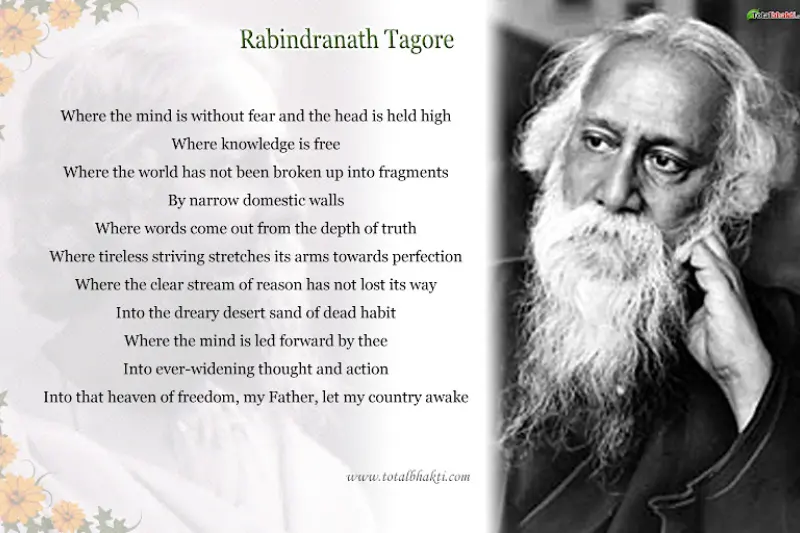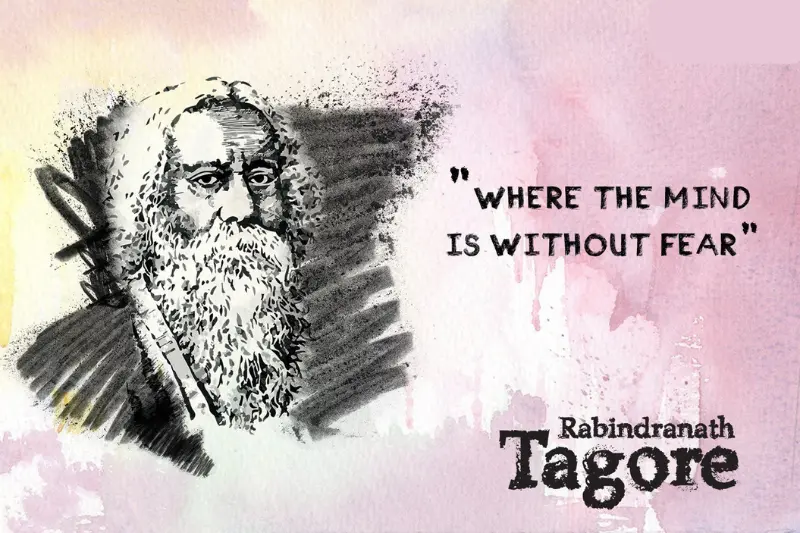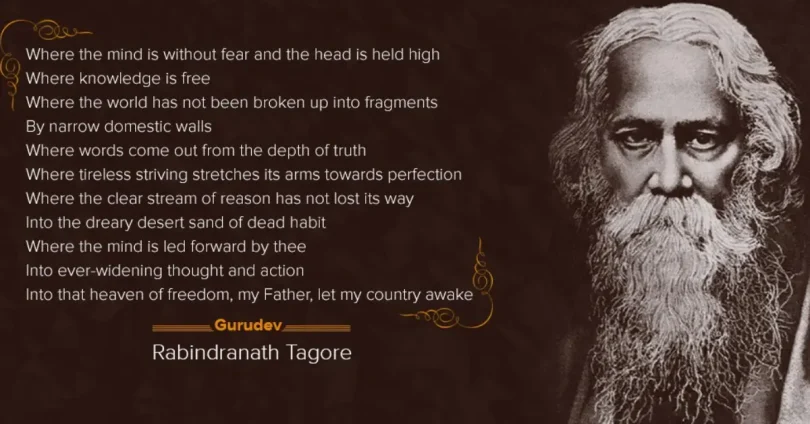Introduction
“Where the Mind is Without Fear” is not just a poem; it is a vision of an ideal society, a prayer for a better world, and a timeless message of enlightenment. Written by Rabindranath Tagore, India’s first Nobel Laureate, this iconic piece is part of his poetry collection “Gitanjali”, which earned him the Nobel Prize for Literature in 1913.
In this poem, Tagore expresses his dream for a nation that is free not only from colonial rule but also from social evils like fear, narrow-mindedness, division, and ignorance. Even more than a century later, these words continue to inspire leaders, educators, students, and thinkers across the globe.
You May Also Like It:
Happy Birthday Poem: Celebrate with Heartfelt Words
Love Poem: A Timeless Way to Express the Heart
10 Things I Hate About You Poem
Background of the Poem

“Where the Mind is Without Fear” was originally written in Bengali, titled “Chitto Jetha Bhoyshunyo”, and later translated into English by Tagore himself. The poem is the 35th entry in Gitanjali and was written during the British rule in India.
At that time, India was fighting for independence. But Tagore believed that freedom was not only political — it also had to be mental, intellectual, and spiritual. Through this poem, he prayed to the Almighty for awakening his country into that “heaven of freedom.”
Line-by-Line Meaning and Explanation
Let’s explore the poem deeply and understand the message hidden in each line:
“Where the mind is without fear and the head is held high;”
Tagore begins by imagining a place where people live fearlessly — without oppression, restrictions, or mental slavery. “Head is held high” refers to dignity, confidence, and self-respect. He envisions a country where individuals are not afraid to speak the truth and express themselves.
“Where knowledge is free;”
In this line, he emphasizes the importance of free access to knowledge. In an ideal society, education should not be limited to the privileged — everyone must have equal opportunities to learn and grow.
“Where the world has not been broken up into fragments by narrow domestic walls;”
Tagore criticizes divisions in society — be it based on caste, religion, race, or nationality. These “narrow domestic walls” are symbolic of prejudice and discrimination that keep humanity divided. He dreams of a united world.
“Where words come out from the depth of truth;”
Here, he speaks about honesty in speech. An ideal society values truthfulness, and people speak with integrity and purpose, not deceit or manipulation.
“Where tireless striving stretches its arms towards perfection;”
Tagore praises hard work and perseverance. A free and ideal nation must be driven by constant effort and the desire to improve — both individually and collectively.
“Where the clear stream of reason has not lost its way into the dreary desert sand of dead habit;”
In this powerful metaphor, Tagore compares reason to a clear stream, and dead habits to dry desert sand. He warns against blind traditions and urges society to think rationally, not just follow outdated customs.
“Where the mind is led forward by thee into ever-widening thought and action—”
Tagore appeals to the Divine, asking for guidance that encourages broad-mindedness, creativity, and progress. A nation should never be stagnant; it must grow in thought and action.
“Into that heaven of freedom, my Father, let my country awake.”
In the final line, Tagore makes his heartfelt plea — let his country awaken into this utopia, this “heaven of freedom,” which is full of truth, unity, courage, and enlightenment.
Themes Explored in the Poem

Freedom:
The central theme is not just political freedom but freedom of thought, expression, and identity.
Education and Knowledge:
Tagore believes knowledge must be accessible to all, as education empowers the mind and breaks the chains of ignorance.
Unity and Brotherhood:
The poem stands against division and promotes unity, harmony, and inclusiveness.
Truth and Reason:
It advocates for a society that values truth, logic, and progress over superstition and blind beliefs.
Spiritual Awakening:
The poem ends on a spiritual note — invoking the higher power to awaken the nation.
You May Also Like It:
Poems About Death: Expressions of Grief and Love
Poem on Nature: A Beautiful Expression of the Natural World
The Beauty and Power of English Poems
Why the Poem is Still Relevant Today
Despite being written over a hundred years ago, “Where the Mind is Without Fear” resonates even more strongly in today’s world. We still face issues of social inequality, misinformation, communal tension, and lack of free thought in many parts of the world.
- In education: Many still do not have access to quality learning.
- In politics: Fear and division are used to manipulate masses.
- In society: Prejudices still separate us based on language, region, and religion.
- In daily life: Truth is often replaced with half-truths and propaganda.
Tagore’s dream, sadly, remains unfulfilled — but his poem serves as a beacon of hope and a call to action.
Conclusion
“Where the Mind is Without Fear” is not merely a poem, but a timeless prayer — for India, and for the world. It challenges us to create a society that upholds dignity, equality, truth, and reason. Rabindranath Tagore’s words are a reminder that true freedom lies in the liberation of the human mind and spirit.
Let us strive to build that world — where the mind is fearless, knowledge is free, and humanity walks hand in hand into a future of peace and wisdom.
You May Also Like It:
Shel Silverstein Poems – Best Poems & Meaning Explained
To Be or Not To Be: Meaning Behind Shakespeare’s Iconic Line







